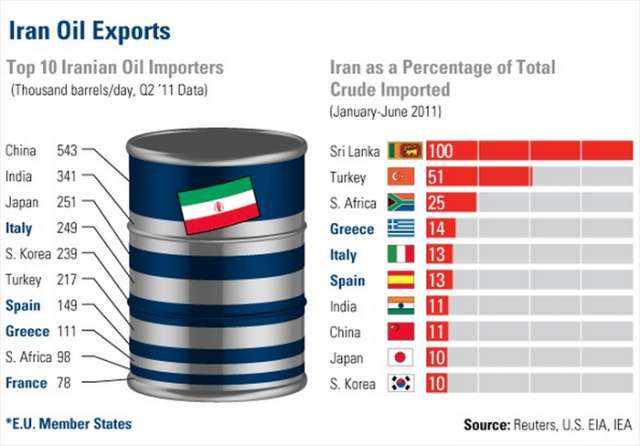Although the Iranian sanctions will probably only start to be lifted by spring next year, there is one nation particularly eager to see sanctions removed: South Africa.
"We are definitely negotiating and looking at when to fully resume oil imports from Iran. For South Africa, if there`s a process of doing that lawfully, tomorrow we will do it, if there are no obstacles to that," said Nomaindia Mfeketo, South Africa`s deputy foreign minister.
As the second-largest economy on the continent, South Africa also has the highest rate of energy consumption.
In the year 2014, South Africa imported close to 425,000 barrels of crude oil. Until 2011, Iran was South Africa`s largest supplier of crude oil, contributing around 25 percent of its total crude oil imports.
But things changed in 2012 when the US and European Union slapped international sanctions on Iran. South Africa halted its imports from Iran and substituted it with imports from other OPEC players like Saudi Arabia, Nigeria, and Angola:
How will the lifting of Iranian sanctions affect the South African region?
"We should sell our oil whether the price falls or goes to $100 [a barrel]. Even though we would like to sell our oil more expensively, the price is determined by the market. After lifting sanctions, Iran will take back the market share of more than 1 million barrels a day that it lost," said Iran’s oil minister, Bijan Zangeneh.
The oil minister explained that his country would raise its production by 500,000 barrels per day immediately after the sanctions were lifted, and it would be followed by a further increase of 500,000 bpd. Iran pumped close to 2.87 million bpd in the month of July and might pump close to 3.8 million bpd once the sanctions are lifted against it.
As the above chart indicates, South Africa will be among the biggest beneficiaries of Iran`s full return to the oil markets. Also, at 503,000 bpd as of January 2015, South Africa is the second-largest refiner of oil in Africa, behind Egypt.
And the refineries in South Africa were specifically designed to process the type of crude that Iran happens to produce. After the Iranian sanctions, the oil refiners in South Africa suffered due to restrictions on importing crude from Iran and thus were forced to change their refining processes.
But this is going to change now as South Africa is planning to build a refinery that would exclusively use the Iranian crude oil.
"We are looking to building a refinery and we have already begun discussions in terms of having a partnership," South Africa`s deputy oil minister, Thembisile Moja, told Reuters.
This move by South Africa would boost its domestic supply of petroleum and reduce its reliance on foreign companies.
The South Africa-Iran partnership would be a "win-win" for the nations as Tehran would also be taking the state-owned PetroSA`s assistance to construct a gas-to-liquid refinery in Mossel Bay. South Africa is also interested in buying natural gas from Iran, along with investing in future LNG projects in the Islamic nation.
But while the removal of sanctions on Iran will be a boon to South Africa, not everyone on the continent will be happy. South Africa is currently importing close to 12 percent of its crude oil from Angola, the largest oil producer in southern Africa, as a substitute to Iranian crude oil.
Once Iranian sanctions are lifted, South Africa`s imports from Angola could fall dramatically.
Also, one has to note that Asia — India, China, and Japan — is the largest oil-importing region for Iran. Since China and India are also the largest oil importers for Angola, any substantial increase in Iran`s crude oil supply might affect Angola`s overall crude oil market share in the coming time.
What does Iran`s return mean for the oil and gas markets?
The BP Statistical Review of World Energy 2015 says that Iran has close to 34 trillion cubic meters of proven gas reserves, one of the highest in the world. As per the European Commission, Iran could export anything between 25 billion to 35 billion cubic meters of natural gas to the EU by 2030 through different pipeline networks.
This could pose a challenge to Russia, which already supplies close to 130 bcm per year to the EU. If Iran can further develop and export its vast natural-gas reserves, that would present stiff competition to gas exporters such as Algeria, Africa`s largest producer of natural gas and the second-largest natural gas supplier to Europe after Russia.
While it is apparent that increased oil supply from Iran once sanctions are lifted would add to the global supply glut, its return would also have a major economic impact on the global natural-gas markets, too.
The coming few years might be a "make or break" for Iran as it tries to expand its market share — in the oil and gas markets — at any cost.
More about:
















































